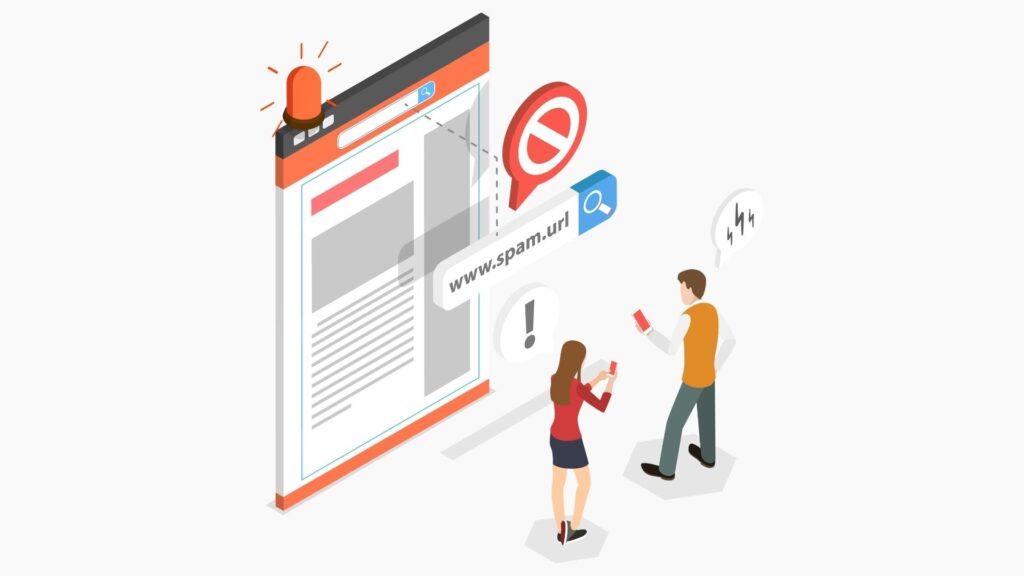How Does Spamdexing or SEO Spam Affect Your Site?

Google has always been vocal about its focus on quality and relevance to user intent. As such, spam is a definite no-no. You may already know this, but do you know the extent of how detrimental it can be to your site? Let’s discover Google’s stance on spamdexing or SEO spam and how it impacts your website’s ranking and visibility.
What is Spamdexing or SEO Spam?
SEO spam, also known as spamdexing, is a malicious attack where hackers infiltrate a website and fill it with spammy links and keywords. The purpose of SEO spam is to manipulate search engine rankings by tricking search engines into thinking the website is more relevant and trustworthy than it actually is.

Common forms of SEO spam include:
- Cloaking: This technique involves showing different content to search engines and website visitors. Hackers hide spammy content from regular visitors but display it to search engines to improve rankings.
- Banner spam: Hackers inject spammy banners and ads onto a website, often redirecting visitors to malicious websites or promoting illegal products.
- The Japanese keyword hack: This technique involves adding Japanese keywords to a website’s content without the website owner’s knowledge. These keywords are often unrelated.
How SEO Spam Impacts Websites
The consequences of SEO spam are far-reaching and can severely damage a website’s reputation, user experience, and overall performance in search engine results pages (SERPs). Here’s how it can affect your site:
- Decreased Search Rankings: When search engines detect spammy content, they may penalize the site by dropping its rankings or, in extreme cases, deindexing the site entirely. This loss of visibility can lead to a significant decrease in organic traffic.
- Compromised User Experience: SEO spam can ruin the user experience, leading to increased bounce rates and decreased time on site. Users who encounter spammy content or malicious ads are likely to lose trust in your site and leave immediately.
- Security Risks: By injecting harmful content, hackers can exploit vulnerabilities to conduct further malicious activities, such as phishing scams, spreading malware, or stealing sensitive data from your visitors.
- Brand Damage: The presence of spammy content can tarnish your brand’s reputation. Customers losing trust in your site can lead to diminished loyalty and a negative perception of your business.

Detecting Signs of SEO Spam
To protect your site, it’s crucial to recognize the early signs of SEO spam:
- Unusual Traffic Patterns: A sudden spike in traffic, especially from unrelated geographic locations or showcasing high bounce rates, might indicate spamdexing.
- Odd Search Engine Results: If you notice your site appearing in search results for irrelevant or spammy keywords, it’s a red flag that your site may be compromised.
- Suspicious Content: Regularly check your site for any unauthorized content, ads, or links that you did not add. These might be hidden in the website’s footer, sidebar, or even embedded within the content.
Strategies to Remove and Prevent SEO Spam
Removing and preventing SEO spam requires a proactive and comprehensive approach:
- Regular Monitoring: Use tools like Google Search Console to monitor your site’s health and check for any security issues or unusual activity.
- Implement Security Measures: Ensure your website is secure by regularly updating software, using strong passwords, and employing security plugins or services to monitor threats.
- Clean Up the Spam: If you detect SEO spam, act swiftly to remove it. This might involve deleting spammy content, removing malicious files, and cleaning up any backdoors that hackers might have installed.
- Request a Review: After cleaning up your site, request a review from the search engine to remove any penalties or blacklists that might have been applied.
- Educate Your Team: Make sure your team is aware of the risks of SEO spam and understands best practices for maintaining a secure and reputable website.
Safeguarding Against SEO Spam
SEO spam or spamdexing is a significant threat that can undermine your website’s credibility, user experience, and search engine ranking. By understanding what SEO spam is, recognizing the signs, and implementing robust security measures, you can protect your site from these malicious attacks. Stay vigilant, monitor your site regularly, and always keep your security measures up to date to ensure your online presence remains secure and trustworthy.
